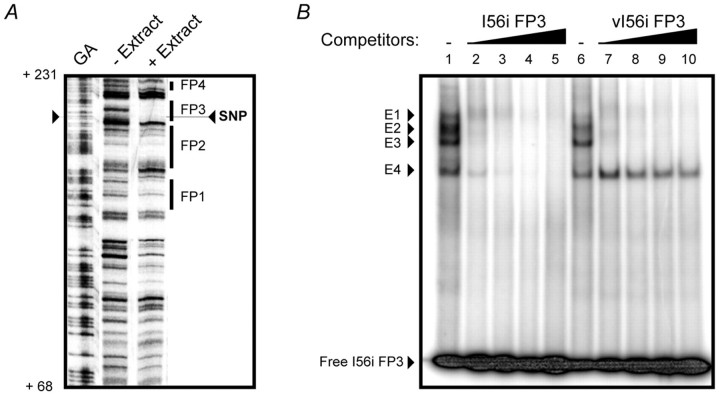Fig. 5.
Binding of a forebrain transcription factor to I56i is affected by the 182-SNP. (A) The 182-SNP is located within a nuclear protein binding site (FP3) in the I56i enhancer as shown by DNaseI footprinting analysis. A DNA fragment corresponding to the I56i enhancer (nucleotides 1-276) was incubated with a nuclear protein extract from E13.5 mouse forebrain (+ Extract). Four regions of the enhancer (FP1 to FP4) were bound by nuclear proteins. Protected areas (footprints) are represented by thick black bars. Protein-DNA interactions were mapped on the mouse I56i enhancer sequence using a Maxam-Gilbert guanine/adenine chemical sequencing reaction (GA) as a standard. The 182-SNP was pinpointed within the protected area FP3. The position on the I56i sequence is shown to the left (Hamilton et al., 2005) (see Fig. S1 in the supplementary material). (B) A competitive electrophoretic mobility shift assay (EMSA) on I56i FP3 was performed using E13.5 mouse embryonic forebrain nuclear extract. In the presence of nuclear extract, four protein-DNA complexes are observed (lanes 1 and 6, complexes E1 to E4). These four complexes were competed by increasing amounts of the unlabeled I56i FP3 oligonucleotide (lanes 2 to 5, I56i FP3). In competition using the SNP-containing vI56i FP3 oligonucleotide (see Fig. 1A for sequence), protein-DNA complexes E1 to E3 were competed, whereas the lower-mobility complex E4 was unaffected (lanes 7 to 10, vI56i FP3).

